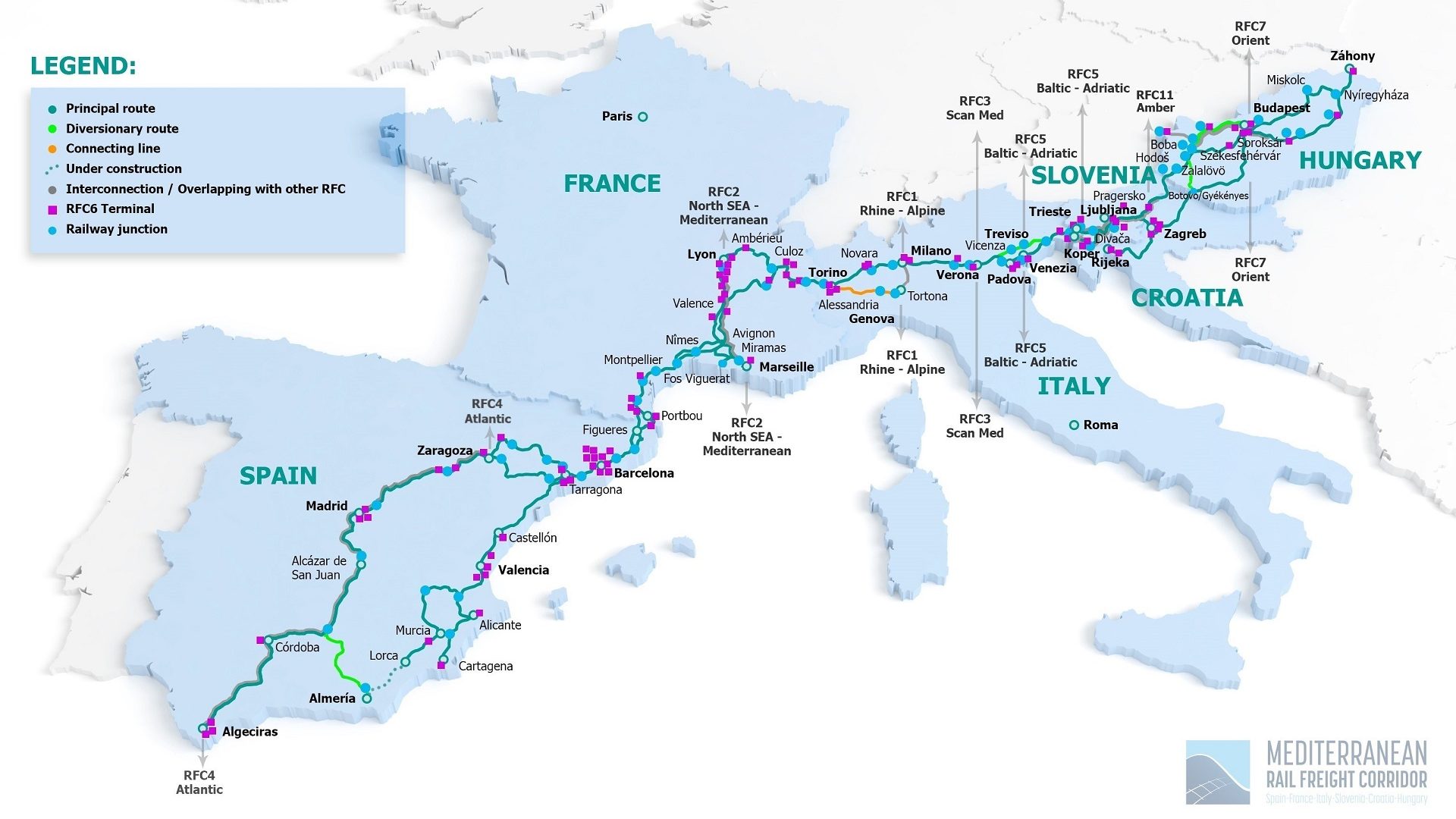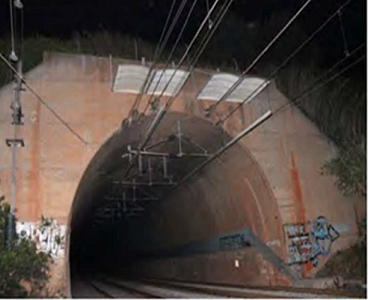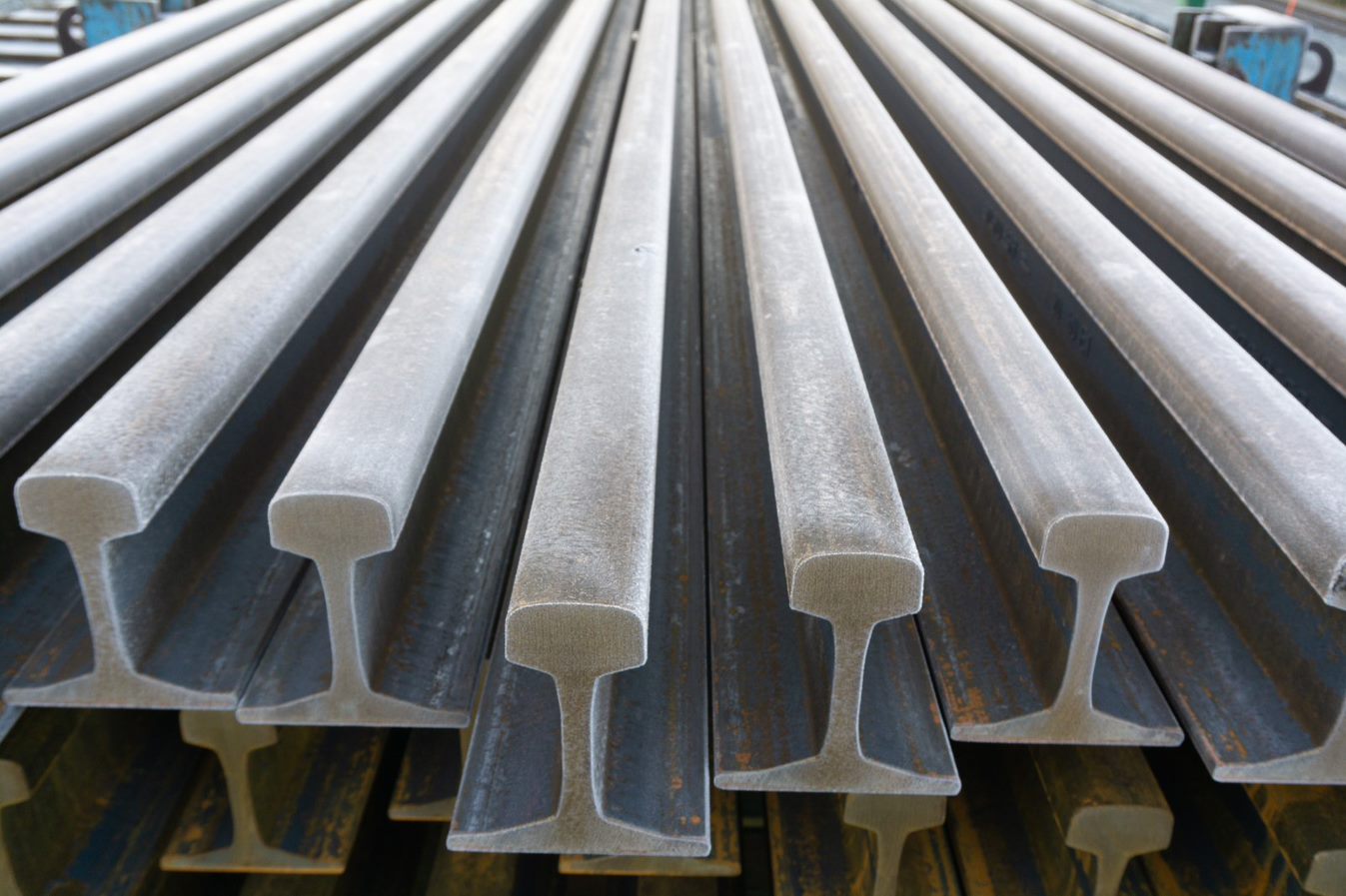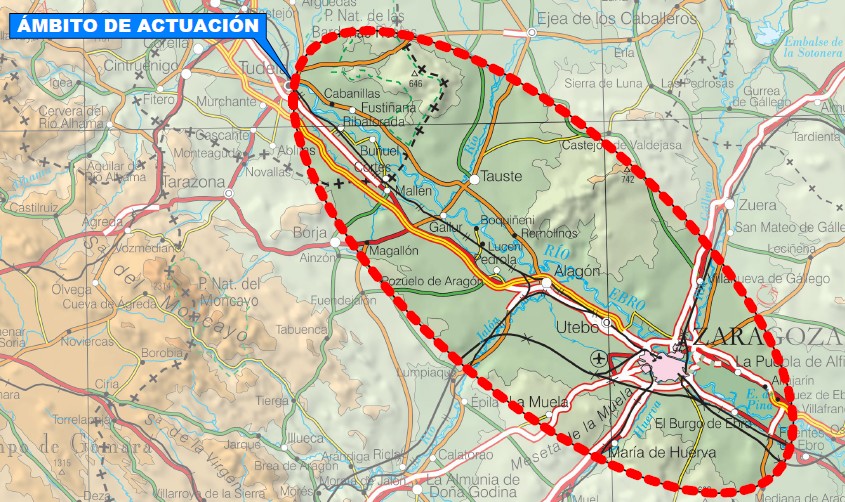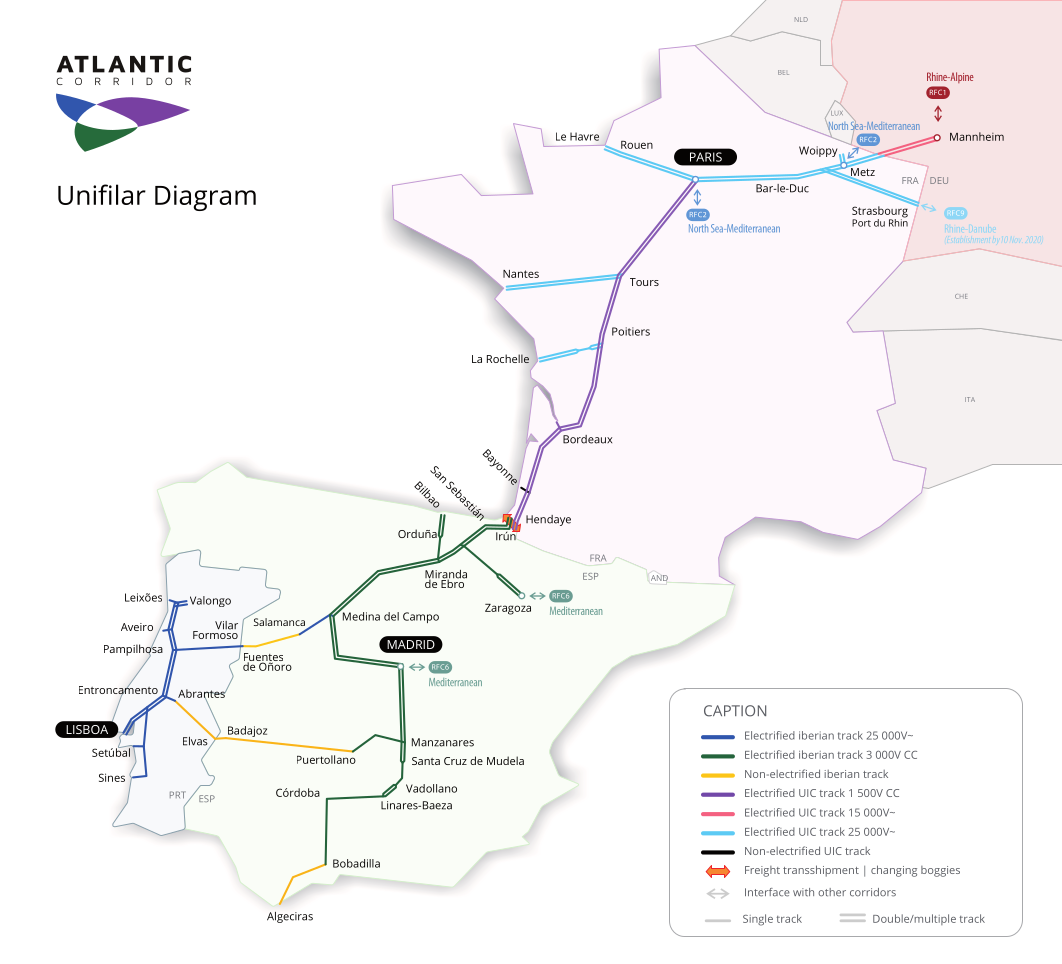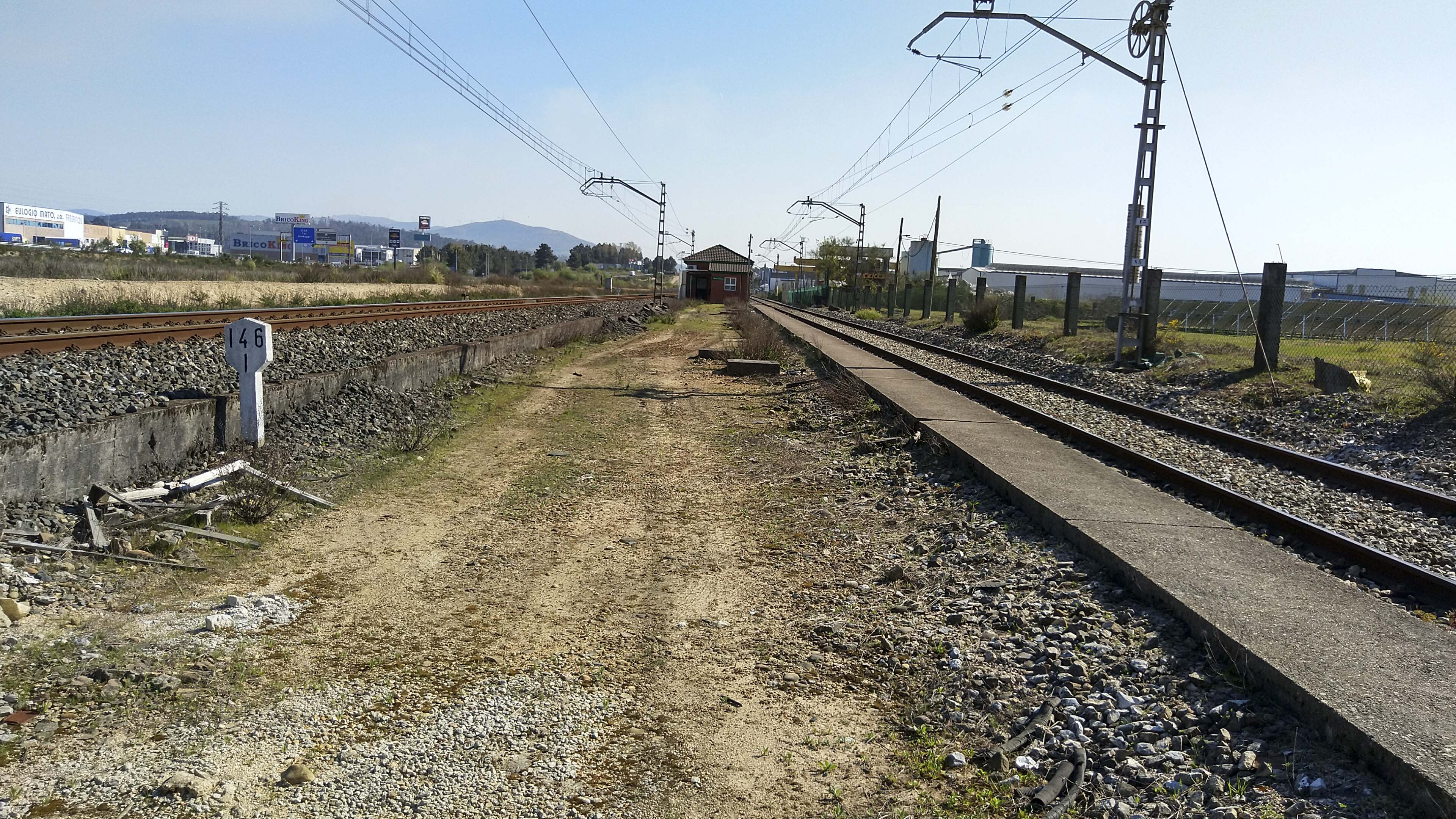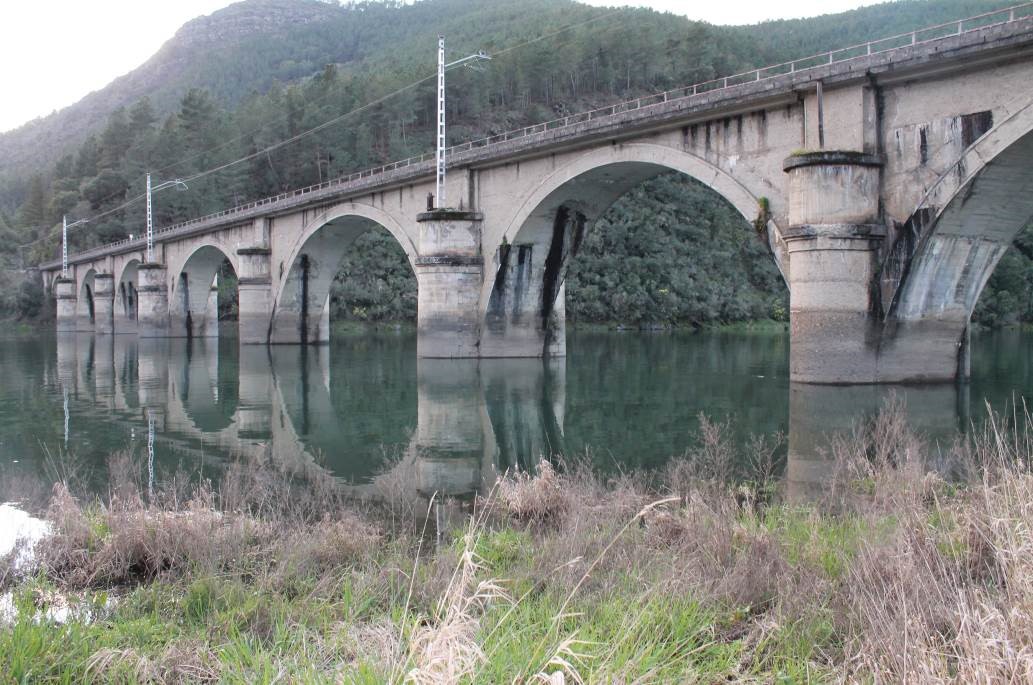European Corridors
Subtítulo sit amet consectetur adipiscing elit.
TEN-T Network Corridors (CNC – Core Network Corridors)
Title
One of the main EU goals is to promote the connectivity of citizens and goods within Europe. One of the main tools for achieving this are the nine TEN-T (Trans-European Network - Transport) Corridors, known as the Core Network Corridors (CNC).
These Corridors are not only railways, but also represent roads, airports, ports and maritime routes linking major communication nodes.
Two of these CNC corridors run through Spain: the Mediterranean and the Atlantic:
Mediterranean Corridor
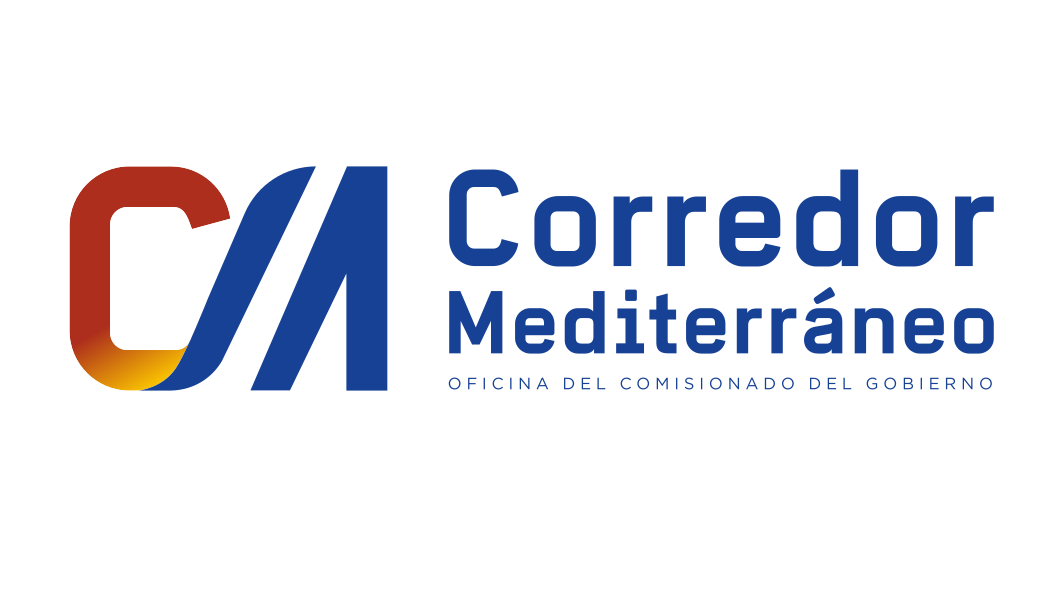
The government appointed a Commissioner for the Mediterranean Corridor to coordinate the follow-up of the works that are carried out on this line.
The Mediterranean Corridor office has designed a tool that allows you to consult all the progress and ongoing projects.
The Mediterranean Corridor office has designed a tool that allows you to consult all the progress and ongoing projects.
Atlantic Corridor
The Ministry of Transport, Mobility and the Urban Agenda has recently appointed a Commissioner for the Atlantic Corridor to promote the development of railway infrastructure and services on this other corridor.
Rail Freight Corridors (RFC)
In 2010, based on the aforementioned TEN-T (CNC) Corridors, the EU created a management tool to increase the competitiveness of rail compared to other means of transport: the Rail Freight Corridors, specific freight corridors. There are currently eleven.
The RFCs partially coincide with the CNC Corridors, and their purpose is to facilitate common governance of these routes so that through a One-Stop Shop the railway companies can request a train route from one end of the Corridor to the other, without having to negotiate with each country through which it passes.
The RFCs partially coincide with the CNC Corridors, and their purpose is to facilitate common governance of these routes so that through a One-Stop Shop the railway companies can request a train route from one end of the Corridor to the other, without having to negotiate with each country through which it passes.
Two of these pass through Spain and involve the participation of Adif. They are, on the one hand, the Atlantic rail freight corridor (formerly known as Rail Freight Corridor No. 4), and the Mediterranean rail freight corridor (formerly known as Rail Freight Corridor No. 6).
Both corridors now have an operational One-Stop Shop. The one for the Atlantic Corridor is in Madrid, and the one for the Mediterranean Corridor is in Milan (Italy). The aim is to deal with, process and coordinate the international freight path requests that these corridors will manage.
Both corridors now have an operational One-Stop Shop. The one for the Atlantic Corridor is in Madrid, and the one for the Mediterranean Corridor is in Milan (Italy). The aim is to deal with, process and coordinate the international freight path requests that these corridors will manage.
Atlantic Rail Freight Corridor (Atlantic RFC)
Atlantic Rail Freight Corridor (Atlantic RFC)
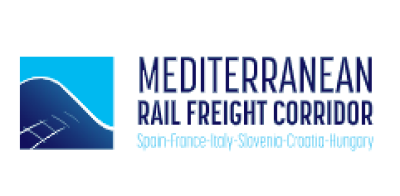
Adif, together with 7 partners from 5 countries, is part of this Corridor (Spanish Administrators for Infraestructure, Adif; France, SNCF Network; Italy, RFI; Slovenia, ASZ; Hungary, MAV; Croatia, HZ Infrastruktura; Figueres Perpignan Line; and the Hungary, VPE capacity allocator). The Mediterranean Corridor's One-Stop Shop is located in Milan, Italy.
The Mediterranean Rail Freight Corridor, which connects at different points to 6 other European Freight Corridors (1, 2, 3, 4, 5 and 7), runs along more than 7,000 kilometers of the route:
- Almería – Valencia / Algeciras / Madrid – Zaragoza / Barcelona – Marseille – Lyon – Torino – Milano – Verona – Padova / Venezia – Trieste / Koper – Ljubljana/Rijeka – Zagreb – Budapest – Zahony (Ukrainian border- Hungary).
—
3 Items per Page
Atlantic Rail Freight Corridor (Atlantic RFC)
Atlantic Rail Freight Corridor (Atlantic RFC)

ADIF and the Infrastructure Managers of Portugal (IP), France (SNCF Réseau) and Germany (DB Netz AG) make up this corridor whose One-Stop Shop is located in Madrid.
The Atlantic Rail Freight Corridor has around 6,200 km of tracks along the following axes:
- Sines/Setúbal/Lisbon/Aveiro/Leixões - Algeciras/Madrid/Bilbao/Zaragoza - Bordeaux/ La Rochelle / Nantes / Paris/Le Havre/ Strasbourg – Mannheim
enlarge map
(www.atlantic-corridor.eu)
(www.atlantic-corridor.eu)
Path towards a new framework for European corridors
A proposal for the revision of Regulation 1315/2013 on the development of the Trans-European Transport Network (TEN-T) is currently being processed within the European Commission (EC).
According to the proposed text, the European Corridors (CNC) would be integrated together with the Rail Freight Corridors (RFC), both concepts being included, if the current proposal goes ahead, in the so-called European Transport Corridors (ETC).
The following link to the European Commission website includes the proposal for the new regulation.
According to the proposed text, the European Corridors (CNC) would be integrated together with the Rail Freight Corridors (RFC), both concepts being included, if the current proposal goes ahead, in the so-called European Transport Corridors (ETC).
The following link to the European Commission website includes the proposal for the new regulation.


